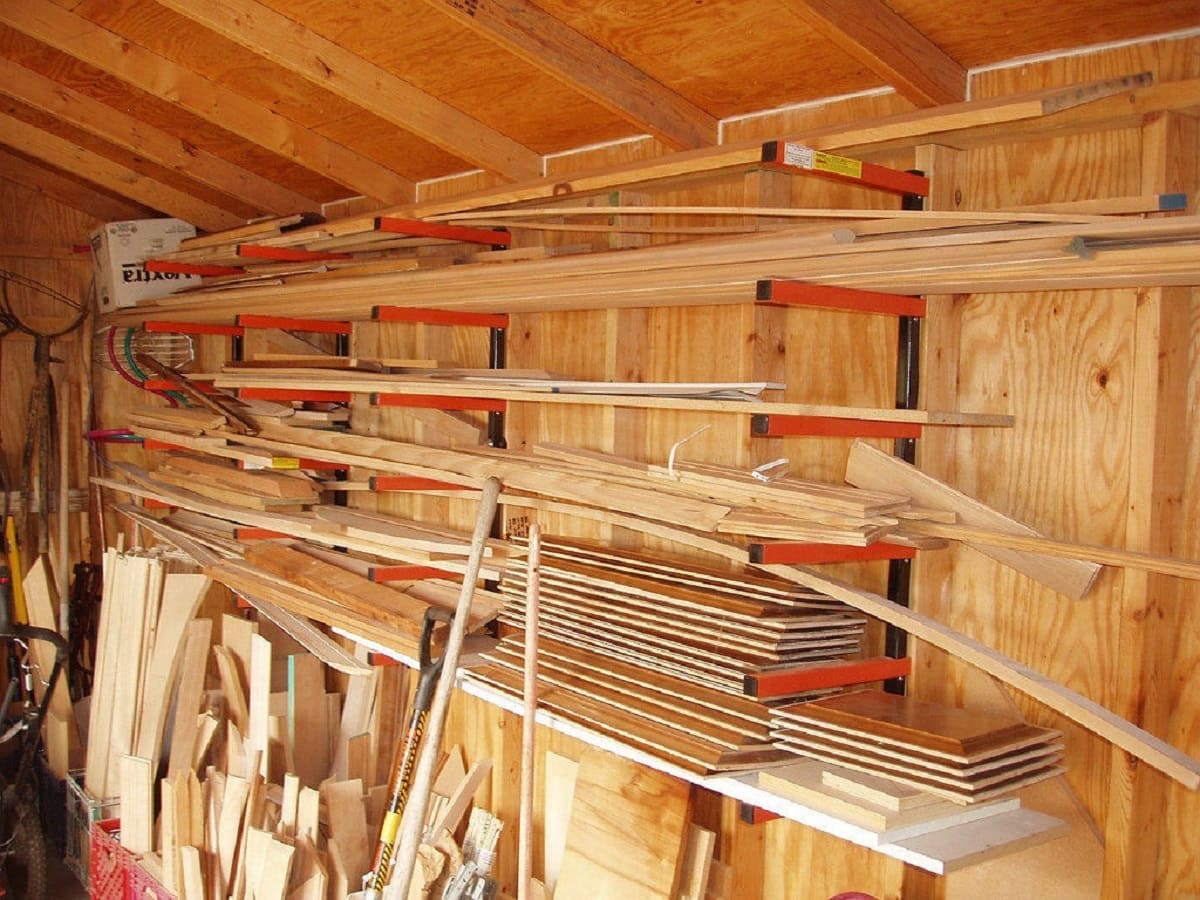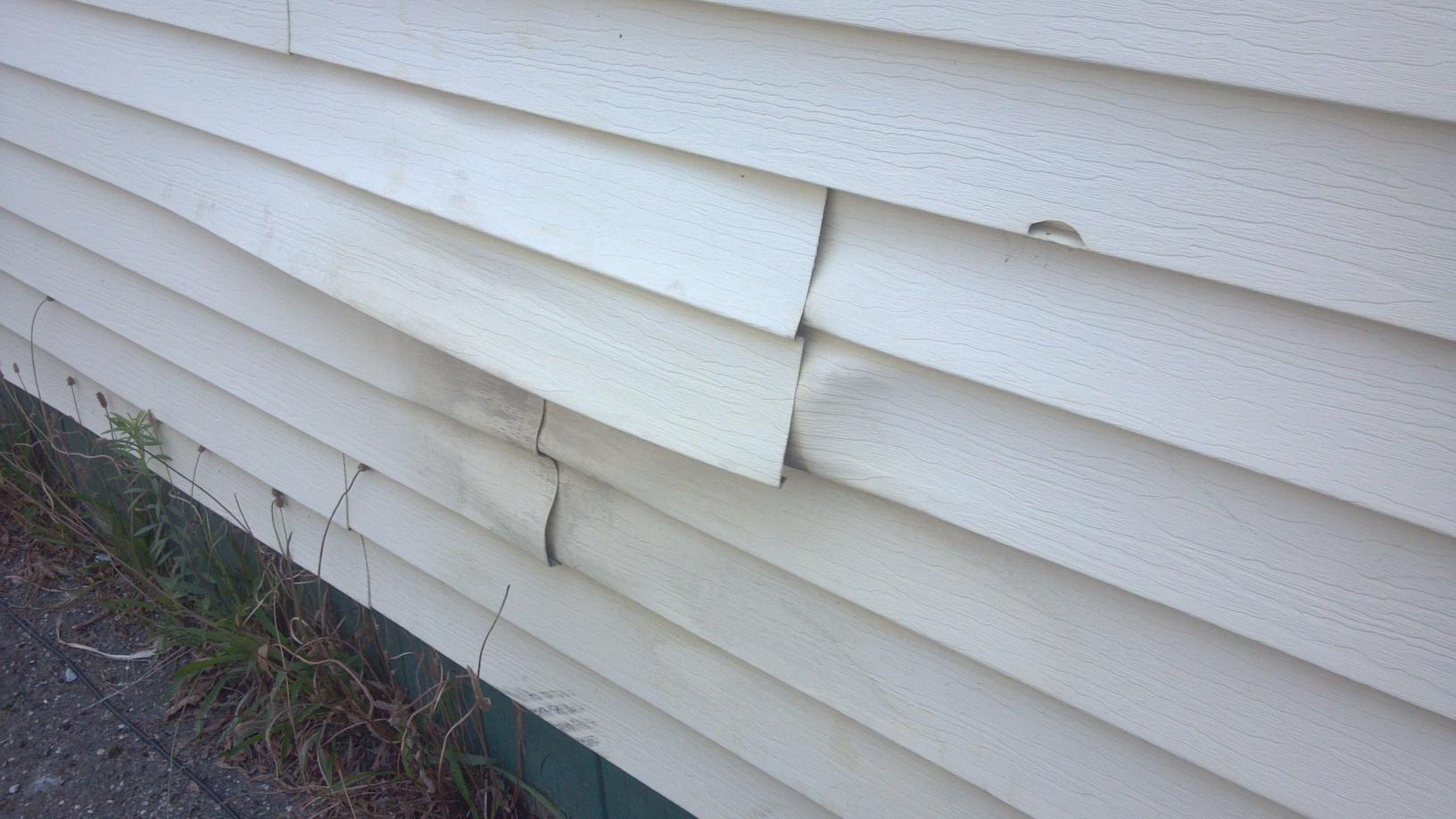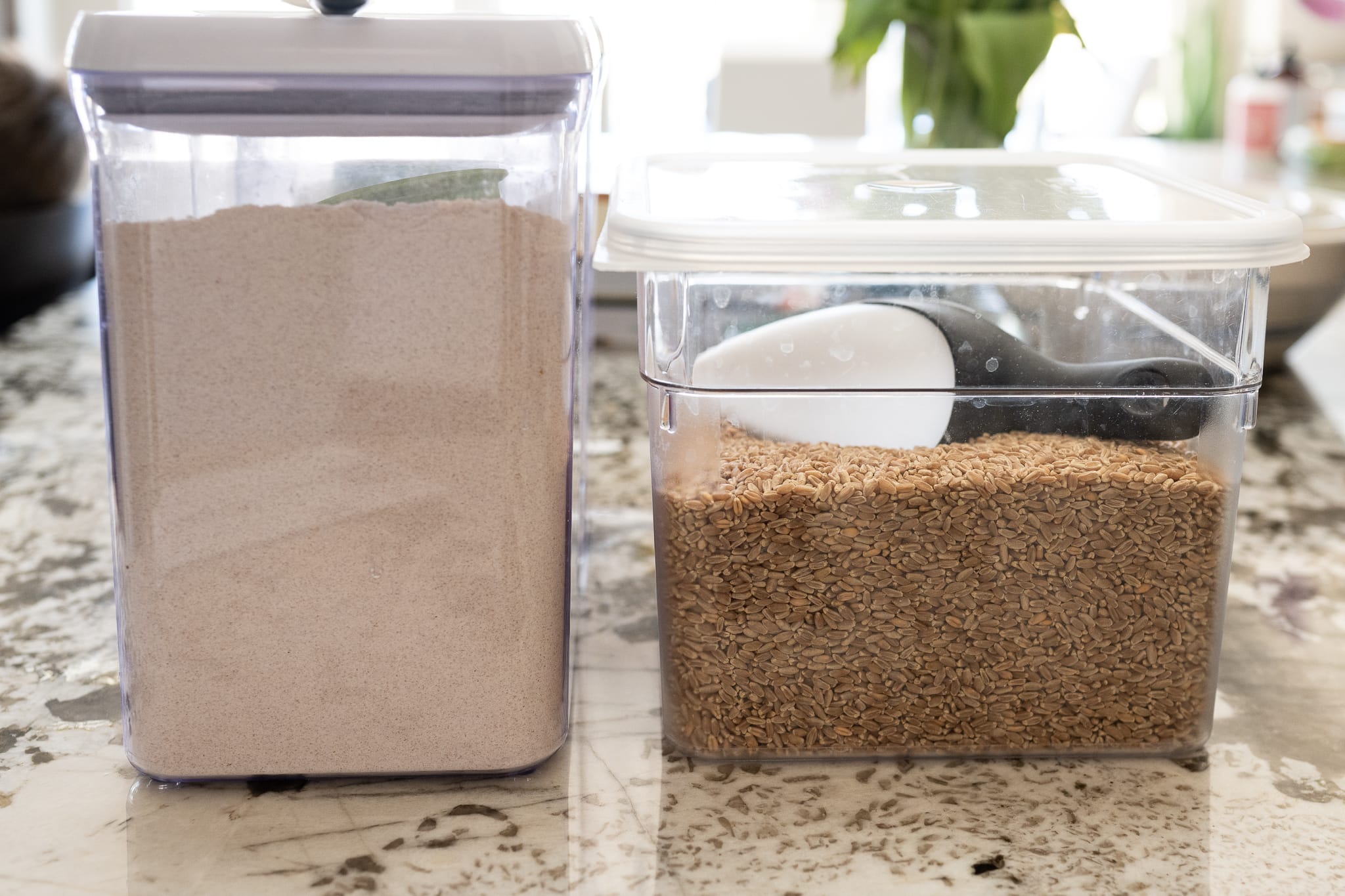

Articles
How To Store Lumber To Prevent Warping
Modified: January 20, 2024
Learn effective strategies for storing lumber to prevent warping. Read our informative articles for expert tips and advice on proper storage techniques.
(Many of the links in this article redirect to a specific reviewed product. Your purchase of these products through affiliate links helps to generate commission for Storables.com, at no extra cost. Learn more)
Introduction
Lumber is a versatile and essential material used in various construction and woodworking projects. Whether you’re a professional contractor or a DIY enthusiast, understanding how to properly store lumber is crucial to ensure its longevity and prevent warping. Warping is a common issue that occurs when the boards bend, twist, or bow, making them difficult to work with and compromising the structural integrity of your project.
In this article, we will explore the causes of lumber warping and provide practical tips and techniques to store lumber effectively. By following these guidelines, you can extend the lifespan of your lumber, reduce waste, and save money on replacements.
Key Takeaways:
- Properly storing lumber is crucial to prevent warping and maintain its quality. Understanding the causes of warping and implementing effective storage practices can protect your investment and ensure optimal conditions for construction and woodworking projects.
- Moisture is the primary culprit behind lumber warping, so creating a controlled and stable environment for your lumber is essential. Regular inspection, maintenance, and implementing preventive practices can save time, money, and resources by avoiding the need for replacing damaged lumber.
Read more: How To Store Lumber
Understanding Lumber Warping
Lumber warping can happen due to various factors, including changes in the moisture content of the wood, inadequate storage conditions, and improper handling. Wood is a hygroscopic material, meaning it absorbs and releases moisture depending on the surrounding environment. This natural process can cause significant changes in the dimensions and shape of lumber if not properly managed.
There are four common types of lumber warping:
- Bow: The board bends along its length, resulting in a curve from end to end.
- Cup: The board warps across its width, creating a concave or convex shape.
- Twist: The board rotates along its length, causing one end to twist relative to the other.
- Crook: The board warps along the edges, creating a curve from one corner to the other.
Now that we understand the different types of lumber warping, let’s explore the steps you can take to prevent it by choosing the right storage location.
Key Takeaways:
- Properly storing lumber is crucial to prevent warping and maintain its quality. Understanding the causes of warping and implementing effective storage practices can protect your investment and ensure optimal conditions for construction and woodworking projects.
- Moisture is the primary culprit behind lumber warping, so creating a controlled and stable environment for your lumber is essential. Regular inspection, maintenance, and implementing preventive practices can save time, money, and resources by avoiding the need for replacing damaged lumber.
Read more: How To Store Lumber
Understanding Lumber Warping
Lumber warping can be frustrating and costly, as it can render the wood unsuitable for use in construction or woodworking projects. To prevent lumber warping, it is important to understand the factors that contribute to it.
The primary cause of lumber warping is moisture. Wood is a porous material that absorbs and releases moisture in response to changes in its environment. When the moisture content of lumber is not properly controlled, it can lead to warping.
There are several ways that moisture can affect lumber and contribute to warping:
- Uneven Moisture Distribution: If one part of the wood is exposed to moisture while another part remains dry, the wood can warp as the moisture content changes. This can occur during improper storage or when the wood is exposed to rain or high humidity.
- Rapid Moisture Changes: Sudden changes in moisture levels can cause the wood to expand or contract unevenly, leading to warping. This can happen when lumber is exposed to drastic changes in temperature or humidity.
- Moisture Gradient: When one side of the wood is exposed to moisture while the other side remains dry, a moisture gradient is created. This can cause the wood to swell or shrink unevenly, resulting in warping.
In addition to moisture, other factors can contribute to lumber warping:
- Improper Storage Conditions: Storing lumber in an environment that is too humid, too dry, or has large temperature fluctuations can increase the likelihood of warping.
- Improper Handling: Rough handling of lumber, such as dropping or stacking it incorrectly, can also lead to warping.
By understanding these factors, you can take proactive measures to prevent lumber warping. In the next section, we will discuss how to choose the right storage location for your lumber.
Choosing the Right Storage Location
When it comes to preventing lumber warping, choosing the right storage location is essential. The storage area should provide a stable environment that minimizes exposure to moisture and temperature fluctuations. Here are some factors to consider when selecting a storage location for your lumber:
- Avoid Moisture-Prone Areas: Choose a storage area that is dry and well-ventilated. Avoid areas with high humidity levels, such as basements or areas prone to water leaks. Moisture can seep into the wood and lead to warping, so it’s crucial to keep your lumber in a dry environment.
- Protect from Direct Sunlight: Sunlight can cause uneven drying and moisture content changes, leading to warping. Store your lumber away from direct sunlight or use protective covers to shield it from the sun’s rays.
- Control Temperature and Humidity: Lumber performs best in stable temperature and humidity conditions. Avoid storing lumber in areas with extreme temperature fluctuations, as this can cause the wood to expand and contract rapidly, leading to warping. Use temperature and humidity control devices like dehumidifiers or fans if necessary.
- Elevate from the Ground: To protect your lumber from moisture on the floor, elevate it using pallets or racks. This will help prevent moisture absorption and minimize the risk of warping.
- Consider Air Circulation: Good air circulation is essential to prevent the buildup of moisture around your lumber. Make sure there is sufficient space between stacks of lumber to allow air to flow freely.
- Keep Away from Vents and HVAC Systems: Avoid storing lumber near vents or HVAC systems that can create temperature or humidity imbalances. These systems can introduce hot or cold air or generate excess humidity, which can contribute to warping.
By selecting an appropriate storage location for your lumber, you can minimize the risk of warping and preserve its quality. In the next section, we will discuss how to prepare the storage area to ensure optimal conditions for your lumber.
Preparing the Storage Area
Before storing your lumber, it’s important to prepare the storage area to create an optimal environment for the wood. Taking the time to properly prepare the space can help prevent warping and ensure the longevity of your lumber. Here are some steps to follow when preparing the storage area:
- Clean and Clear the Area: Remove any debris, dust, or other materials from the storage area. A clean area will help prevent unwanted moisture or contaminants from coming into contact with the lumber.
- Inspect for Moisture Sources: Check for any potential sources of moisture, such as leaks or condensation. Repair any issues to avoid introducing excess moisture into the storage area.
- Seal Windows and Doors: Ensure that windows and doors are properly sealed to minimize the potential influx of outdoor humidity and moisture.
- Install Insulation: If the storage area lacks proper insulation, consider adding insulation to regulate temperature and humidity levels. This can help create a more stable environment for your lumber.
- Control Pests: Take measures to prevent pests, such as insects or rodents, from accessing your lumber. Seal any openings and consider using traps or deterrents to protect your stored wood.
- Monitor for Mold: Mold can thrive in damp environments and negatively impact the quality of your lumber. Regularly inspect the storage area for any signs of mold, and promptly address it if discovered.
- Implement Fire Safety Measures: Lumber is highly flammable, so it’s important to have proper fire safety measures in place. Install fire extinguishers or other necessary equipment and ensure compliance with local fire codes.
By following these preparation steps, you can create a storage area that is conducive to maintaining the quality and integrity of your lumber. In the next section, we will discuss how to properly stack and organize your lumber to further prevent warping.
Read more: How To Store Lumber In Garage
Stacking and Organizing Lumber
Properly stacking and organizing your lumber is crucial for preventing warping and maximizing space efficiency. When arranging your lumber, it’s important to consider factors like weight distribution, airflow, and accessibility. Here are some guidelines for stacking and organizing your lumber:
- Stack Lumber Horizontally: Stack your lumber in a horizontal position rather than standing it vertically. Horizontal stacking helps distribute the weight evenly and reduces the risk of bowing or sagging.
- Use Level Supports: Place sturdy and level supports, such as blocks or pallets, at regular intervals to provide even support for the lumber stacks. Avoid using uneven or unreliable supports that can lead to uneven weight distribution and potential warping.
- Use Spacers: To maintain consistent airflow and prevent moisture buildup, use spacers between each layer of lumber. These can be small strips of wood or plastic placed horizontally between the boards, allowing air to circulate around each piece of lumber.
- Organize by Size and Type: Keep your lumber stacks organized by grouping them according to size and type. This makes it easier to find the specific piece of lumber you need without disrupting the entire stack.
- Rotate Stock: Periodically rotate your lumber stock so that the same pieces are not sitting at the bottom of the stack for extended periods. This helps prevent uneven compression and reduces the risk of warping in specific boards.
- Avoid Overloading: Be mindful of the weight limits of your storage area and do not overload the stacks of lumber. Excessive weight can lead to pressure on the bottom boards, causing them to warp or deform.
- Leave Space for Air Circulation: Ensure that there is enough space between the stacks of lumber to allow for proper air circulation. This helps prevent moisture buildup and promotes a more stable environment.
By following these stacking and organizing guidelines, you can minimize the risk of lumber warping and make your lumber more accessible for future projects. In the next section, we will discuss the importance of using proper supports and spacers when storing lumber.
Store lumber in a dry, well-ventilated area, off the ground and supported by evenly spaced stickers to allow for air circulation. Cover with a tarp to protect from moisture.
Using Proper Supports and Spacers
Using appropriate supports and spacers when storing lumber is crucial for maintaining its integrity and preventing warping. These tools help distribute weight evenly, promote airflow, and minimize the risk of moisture buildup. Here are some tips for using proper supports and spacers:
- Choose Sturdy Supports: When selecting supports for your lumber stacks, opt for sturdy materials that can withstand the weight of the boards. This can include wooden blocks, metal racks, or pallets.
- Ensure Level Support: It’s essential to ensure that the supports are level to prevent uneven weight distribution, which can lead to warping. Use a spirit level or similar tool to ensure the supports are even and adjust them if necessary.
- Place Supports at Regular Intervals: Position the supports at regular intervals along the length of the lumber stack. This helps distribute the weight evenly and prevents excessive bending or sagging in the boards.
- Use Spacers Between Lumber Layers: Spacers play a crucial role in maintaining airflow and preventing moisture buildup between the layers of lumber. Place thin strips of wood or plastic spacers horizontally between the boards to create space for air circulation.
- Avoid Excessive Spacing: While it’s important to allow for adequate airflow, avoid excessively wide gaps between the boards or layers. This can lead to instability and potential damage to the lumber.
- Consider Moisture-Resistant Spacers: In environments with higher humidity levels or when storing lumber for an extended period, consider using moisture-resistant spacers. These can help prevent moisture absorption from the supports and reduce the risk of warping.
- Regularly Inspect and Adjust Supports: Periodically inspect and adjust the supports and spacers to ensure they are still in good condition and properly supporting the lumber stacks. Replace any damaged or worn-out supports promptly.
By using proper supports and spacers, you can prevent uneven weight distribution, promote airflow, and minimize the risk of moisture-related issues. In the next section, we will discuss the importance of monitoring and maintaining humidity levels to prevent lumber warping.
Monitoring and Maintaining Humidity Levels
Monitoring and maintaining appropriate humidity levels is crucial for preventing lumber warping. Wood is highly sensitive to changes in moisture content, and excessive moisture or dryness can cause the boards to expand or contract, leading to warping. Here are some tips for monitoring and maintaining humidity levels:
- Use a Hygrometer: A hygrometer is a device that measures the relative humidity in the air. Place a hygrometer in your storage area to monitor humidity levels regularly. Aim for a stable humidity range of around 30% to 50%, as this is generally considered optimal for lumber storage.
- Invest in a Dehumidifier: If your storage area tends to have high humidity levels, consider investing in a dehumidifier. A dehumidifier removes excess moisture from the air, helping to create a more stable environment for your lumber.
- Use Humidifiers in Dry Environments: In areas with dry climates or during drier seasons, using humidifiers can help maintain appropriate humidity levels. This prevents the lumber from drying out excessively and reduces the risk of warping.
- Seal Gaps and Cracks: Check for any gaps, cracks, or openings in the storage area that may allow moisture to seep in. Seal these areas to prevent moisture infiltration and maintain a more controlled humidity environment.
- Ensure Proper Ventilation: Good airflow is essential for maintaining consistent humidity levels. Ensure that your storage area has proper ventilation to prevent stagnant air and to promote moisture evaporation.
- Monitor External Weather Conditions: Keep an eye on the weather forecast, especially during periods of high humidity or extreme temperature changes. Adjust your humidity control devices accordingly to compensate for external humidity fluctuations.
- Regularly Check Lumber Moisture Content: Periodically check the moisture content of your lumber using a moisture meter. This allows you to assess if the boards are within an acceptable range and take necessary steps to adjust the humidity levels, if needed.
By monitoring and maintaining proper humidity levels, you can significantly reduce the risk of lumber warping and preserve the quality of your wood. In the next section, we will discuss the importance of protecting lumber from moisture to prevent warping.
Protecting Lumber from Moisture
Moisture is one of the primary causes of lumber warping, so it’s crucial to take steps to protect your lumber from excessive moisture. By implementing effective moisture protection measures, you can significantly reduce the risk of warping and preserve the quality of your wood. Here are some tips for protecting lumber from moisture:
- Use Waterproof Covers: When storing lumber outdoors or in areas prone to moisture, use waterproof covers or tarps to protect it from rain, snow, or other sources of water. Ensure that the covers are properly secured and do not touch the lumber directly.
- Elevate the Lumber: Keep your lumber elevated off the ground using pallets or racks. This prevents direct contact with moisture on the floor and minimizes the risk of moisture absorption.
- Apply Protective Coatings: Consider applying a protective coating or sealant to the ends and surfaces of the lumber. This creates a barrier that helps prevent moisture from penetrating into the wood fibers.
- Utilize Moisture Barriers: Place moisture barriers such as plastic sheets or vapor barriers between the lumber stacks and the floor or walls. This helps prevent moisture transfer and protects the lumber’s integrity.
- Inspect for Leaks: Regularly inspect the storage area for any leaks or sources of water ingress. Fix any leaks promptly to prevent moisture from entering the storage space and coming into contact with the lumber.
- Maintain Proper Ventilation: Adequate airflow is essential to prevent moisture buildup. Ensure that your storage area has proper ventilation to promote drying and minimize the risk of condensation.
- Store in Climate-Controlled Spaces: If possible, consider storing your lumber in a climate-controlled space such as a workshop or garage. This allows you to maintain a consistent temperature and humidity level, reducing the likelihood of moisture-related issues.
- Avoid Excessive Exposure to Humidity: Minimize the amount of time that your lumber is exposed to high humidity environments. If you need to transport the lumber or work on it outdoors, plan your activities during drier weather conditions when possible.
By implementing these moisture protection measures, you can safeguard your lumber from excessive moisture and greatly reduce the risk of warping. In the next section, we will discuss the importance of regular inspection and maintenance in preventing lumber warping.
Read more: How To Store Lumber Outside
Regular Inspection and Maintenance
Regular inspection and maintenance play a vital role in preventing lumber warping. By conducting routine checks and addressing any issues promptly, you can catch potential problems early and mitigate the risk of warping. Here are some guidelines for regular inspection and maintenance:
- Inspect Lumber for Signs of Warping: Regularly inspect your stored lumber for any signs of warping, such as bowing, cupping, twisting, or crooking. If you identify any warped boards, remove them from the stack and assess if they can be salvaged or need to be replaced.
- Check for Mold or Fungal Growth: Mold or fungal growth can occur when excess moisture is present. Regularly inspect your lumber for any signs of mold or fungal growth and take appropriate measures to address the issue, such as improving ventilation or using mold inhibitors.
- Monitor for Pest Infestations: Pests like insects and rodents can damage your lumber and contribute to warping. Keep an eye out for any signs of pest infestation, such as chew marks or droppings, and take necessary measures to eliminate the pests effectively.
- Assess for Water Damage: Check your storage area for any signs of water damage, such as water stains or dampness. Address the source of water and repair any leaks or issues to prevent further damage to your lumber.
- Rotate and Restack Lumber: At regular intervals, rotate and restack your lumber to ensure even weight distribution. This helps prevent specific boards from bearing excessive weight for extended periods, reducing the risk of warping.
- Reapply Protective Coatings: Over time, the protective coatings or sealants on your lumber may wear off. Monitor the condition of the coatings and reapply as needed to maintain the protective barrier against moisture.
- Replace Damaged or Compromised Lumber: If you discover any lumber that is significantly damaged, compromised, or showing signs of decay, remove and replace it promptly. Keeping damaged lumber in the stack can contribute to further warping and compromise the structural integrity of your projects.
- Maintain a Clean Storage Area: Ensure that your storage area remains clean and free from debris that could potentially introduce moisture or pests. Regularly clear out any accumulated dust, wood chips, or other materials that may affect the quality of your lumber.
By regularly inspecting and maintaining your lumber, you can identify and address potential issues before they escalate, ensuring that your lumber remains in optimal condition and minimizing the risk of warping. In the next section, we will conclude with a summary of the key points discussed in this article.
Conclusion
Properly storing lumber is essential to prevent warping and maintain its quality over time. By understanding the causes of lumber warping and implementing effective storage practices, you can protect your investment and ensure that your lumber remains in optimal condition for your construction and woodworking projects.
Throughout this article, we discussed various strategies to prevent lumber warping. We explored the importance of choosing the right storage location, preparing the storage area, stacking and organizing lumber, using proper supports and spacers, monitoring and maintaining humidity levels, and protecting lumber from moisture. By following these guidelines, you can greatly reduce the risk of warping and prolong the lifespan of your lumber.
Remember, moisture is the primary culprit behind lumber warping, so it’s crucial to be vigilant in creating a controlled and stable environment for your lumber. Regular inspection and maintenance are also crucial to catch any issues early and address them promptly.
By implementing these practices, you can not only prevent warping but also save time, money, and resources by avoiding the need for replacing damaged lumber. Whether you are a professional contractor or a DIY enthusiast, proper lumber storage is a fundamental aspect of any successful construction or woodworking project.
So, take the necessary steps to store your lumber correctly, considering factors such as moisture control, ventilation, and regular maintenance. By doing so, you can ensure that your lumber remains in optimal condition, ready to be transformed into beautiful and structurally sound creations.
Remember, prevention is key, so apply these techniques from the moment you acquire your lumber to ensure the best possible outcomes for your projects. Happy woodworking!
Frequently Asked Questions about How To Store Lumber To Prevent Warping
Was this page helpful?
At Storables.com, we guarantee accurate and reliable information. Our content, validated by Expert Board Contributors, is crafted following stringent Editorial Policies. We're committed to providing you with well-researched, expert-backed insights for all your informational needs.














0 thoughts on “How To Store Lumber To Prevent Warping”